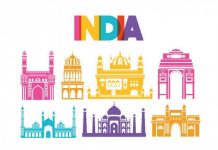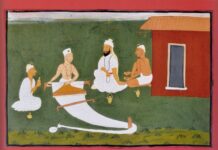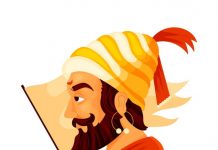- In the 1870s and 1880’s- Dissatisfaction with the British rule got intensified.
- 1878- Arms act got passed- This Arms act had disallowing Indians from possessing arms.
- 1878- Vernacular press act– to silence those who were critical of the government.
- 1883- Ilbert bill- the bill provided for the trial of European persons by Indian judges in the country.
- 1885- Formation of Indian National Congress
- 1905- Partition of Bengal by Curzon.
- Reason for partition of Bengal: Administrative convenience.
- 1906- Formation of All India Muslim League
- 1907- Surat split (between moderates and extremists)
- 1909- Demand for a separate electorate for Muslims got acknowledged by the British government.
- 1911- Annulment of the partition of Bengal
- 1916- Lucknow pact ( it was a patch-up between moderates and extremists, and also Congress and Muslim League decided to work together)
- 1917- Champaran movement
- 1919- Rowlatt act passed – The act curbed fundamental rights such as freedom of expression and strengthened police powers.
- Rowlatt act turned out to be the FIRST ALL INDIA STRUGGLE against the British government.
- 1919- Jallinwalabagh massacre and Tagore renounced his knighthood as a protest.
- 1920- Khilafat movement took place. Gandhi took it as an opportunity for Muslim-Hindu unity and supported the Khilafat movement.
- 1920- Non-cooperation movement took place. As a protest, Indians surrendered their British titles.
- Import of foreign cloth fell drastically in 1920 and 1922.
- Khadi became the symbol of India.
- Tilak Swaraj fund got established in the year 1920, and it had a great response.
- 1922- Gandhi called off the Non-Cooperation movement
- 1922- Chauri-chaura incident– killing 22 policemen.
- After the Debacle of Non-Cooperation Movement in 1922, two groups of leaders got evolved, they were:
- a. No changers: No changers were Ansari, Rajagopalachari, Rajendra Prasad, Vallabh Bhai Patel, and others. They advocated continuing Gandhian constructive rural work.
- b. Pro changers: Pro changers were Motilal Nehru, CR Das, etc., – They demanded Congress participation in council politics.
- 1927- Simon Commission: The Commission got created to recommend further constitutional reforms. The commission then headed by Sir John Simon, and it consisted of all-white members. When Simon came to Indian, he was greeted with black flags as a mark of protest by the Indians with raised slogans stating Simon Go Back.
- 1928-Nehru Report: It demanded a responsible government and advocated dominion states. It was not for complete independence. It demanded universal suffrage. It rejected separated communal elections.
- 1929- Irwin Offer: It proposed a vague offer of dominion status for India in an unspecified future period and a Round Table Conference to discuss a future constitution after the publication of the Simon Report.
- 1929- Lahore Session of Congress: The president of this session was Jawahar Lal Nehru. It decided to boycott Round Table Conference. Purna Swaraj got adopted as the main aim of the Congress under the presidentship of J.L.Nehru.
- On Dec 31st, 1929, Tricolor was hoisted at the Shore of Ravi.
- 1930- Civil Disobedience Movement started with the Dandi march on March 12th, 1930- to break the salt law under the leadership of Gandhi
- January 26th,1930- was observed as Independence day all over the country.
- 1930- First Round Table Conference: It was the first-ever conference that made British and Indians equal. Congress boycotted it. However, Motilal Nehru, Liberals, and princes attended it.
- 1931- Second Round Table Conference: Gandhi attended only one round table conference, and that is the second round table conference.
- 1931- Gandhi-Irwin pact: It offered the release of all the political prisoners, except Bhagat Singh, Rajguru, and Sukhdev. The right to make salt got accepted. Gandhi agreed to suspend the Civil Disobedience Movement and participate in the second session of the Round Table Conference.
- 1932- Third Round Table Conference: The majority of the leaders of INC did not participate. The result of the conference got published in a White paper based on which the British government passed the Government of India Act of 1935.
- 1932-Ramsay MacDonald proposed a separate electorate for minority communities, including Dalits. The proposal got the support of B.R.Ambedkar, but Gandhi opposed it.
- 1932- Poona pact- Gandhi felt that a separate electorate would disintegrate the society on caste lines and may lead to the permanent division of the society. To avoid such a scenario, Gandhi went on for hunger strike for 21 days in Yerawada central jail. This issue got finally resolved between B.R.Ambedkar and Gandhi by signing the historic Poona pact.
- Gandhi devoted himself to the Harijan Cause. He even started a newspaper called Harijan.
- Resumption of Civil Disobedience Movement and Withdrawl: Gandhi restarted CDM on December 29th, 1931, when all efforts of convincing Britishers for some administrative concessions failed during the second round conference. Gandhi advised suspending the CDM in 1933.
- 1935- The government of India act 1935 prescribed provincial autonomy, and the government announced elections to the provincial legislatures in 1937. Congress formed a government in 6 out of 11 provinces.
- The 1937 provincial elections seemed to have convinced the Muslim League that Muslims were a minority and they have to play second fiddle in any democratic structure. It felt that Muslims might even go unrepresented.
- 1930 – Congress failed to mobilize the Muslim masses and allowed the League to widen its social support.
- In 1940- Muslim League moved a resolution demanding Independent states for Muslims in the North-western and eastern areas of the country.
- In the late 1930s, the Muslim League began viewing the Muslims as a separate nation from the Hindus.
- 1940- August offer: The British wanted Indian’s support during the second war world and wanted more Indians in the war advisory council. Hence they promised to give dominion status to India after the war. Congress and Muslim League rejected the proposal and demanded complete independence.
- 1942-Cripps missions-The British government wanted India to fully corporate with it during Second World War and made few proposals to League and Congress and promised them independence after the war. But the proposals were rejected by both parties, and hence the Cripps mission was a failure.
- 1942- Gandhi called for the Quit India movement – DO or DIE to fight the British. Communication and the symbols of the state authority got attacked all over the country.
- 1945- At the end of the Second World War, the British opened negotiations between Congress and the League and themselves to discuss the independence of British India. But the talks failed.
- 1945- Wavell plan- The plan suggested that all the portfolios except the Defence have to be held by the Indian members. It also suggested the reconstitution of the Viceroy’s Executive Council, and the political parties have to nominate few candidates from their party out of whom the Viceroy would select the candidate of his choice for the Executive Council.
- 1945- Shimla conference: The conference was to discuss these proposals, and for a better future in India, Wavell called all the political parties for their opinion to Shimla, and this conference popularly called as Shimla conference. Differences arose between the Congress and the League about the representation of the Muslim community. This conference was a failure.
- 1946- Elections got held. Congress did well in general constituencies but, League did exceptionally well in the seats reserved for Muslims.
- 1946- Cabinet Mission: The mission consisted of Lord Patrick-Lawrence, the Secretary of State for India, Sir Stafford Cripps, President of the Board of Trade, and A.V. Alexander, the First Lord of the Admiralty. The mission had suggested that India should remain united and constitute itself as a loose federation. It shall give some autonomy for the Muslim majority areas. Both Congress and League did not agree to specific details of the proposal.
- 1946- Muslim League decided on a mass agitation for winning its demand for Pakistan.
- 1946- Direct Action Day- Muslim League announced August 16th, 1946 as Direct action day. On this day, riots broke in Calcutta and lasted for several days. By March 1947, violence spread to different parts of northern India.
- Indian Independence Act 1947: It was the act of the Parliament of the United Kingdom. It received royal assent on July 18th, 1947. According to this act, British India to be divided into two states- namely India and Pakistan.
- On August 15th, 1947- India became independent.










whoa this blog is wonderful i really like reading your articles. Keep up the good work. You realize, a lot of people are hunting round for this kind of info, you are helping them greatly.
Thank you
I have read so many posts about this topic however this post is really a good piece of writing, keep it up
Thank you
I am really impressed with your writing abilities as neatly as with the structure of your blog. Anyway stay up the nice quality writing, it’s uncommon to peer a nice weblog like this one these days.
Thank you
Great article and straight to the point. Thx 🙂
Thank you
This is the right blog for anyone who wants to find out about this topic. Great stuff, just great!
Thank you
whoah, this blog is wonderful I really like reading your articles. You realize, a lot of people are hunting around for this info, and you could help them greatly.
Thank you
I have read so many posts about the blogger lovers however this post is really a good piece of writing, keep it up
Thank you
This post is really a good piece of writing, keep it up.
Thank you
whoah this blog is wonderful i really like reading your articles. You realize, a lot of people are hunting round for this info, you could help them greatly.
Thank you
I like to say thank you for the nice information you’ve provided here. It has been quite surprisingly generous with you to provide publicly what exactly many individuals could have offered for sale for an electronic book to get some profit for themselves, notably considering the fact that you might have tried it if you considered necessary. Lucky to discover your website.
I have read so many posts about the blogger lovers howeverthis post is really a good piece of writing, keep it up.
Thank you
What good interlocutors 🙂
I have read so many posts about the blogger lovers however this post is really a good piece of writing, keep it up
I am actually delighted to read this webpage posts which consists of tons of useful information,
thanks for providing these data.
Feel free to surf to my page 2022
The utterly great subject matter, thank you for the selective information.
Thank you
https://www.philadelphia.edu.jo/library/directors-message-library
https://www.philadelphia.edu.jo/library/directors-message-library
Great selection of modern and classic books waiting to be discovered. All free and available in most ereader formats. download free books
whoah this blog is wonderful i really like reading your articles. Keep up the great paintings! You realize, a lot of people are hunting round for this info, you could help them greatly.
whoah this blog is wonderful i really like reading your articles. Keep up the great paintings! You realize, a lot of people are hunting round for this info, you could help them greatly.
Great selection of modern and classic books waiting to be discovered. All free and available in most ereader formats. download free books